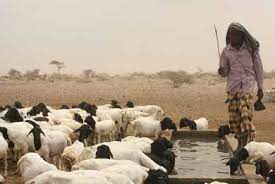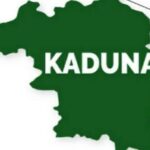It is not what you don’t have that limits you; it is what you have but don’t know how to use. – Steven Furtick
Investing in the improvement of the large livestock population and the numerous grazing reserves in the North West holds immense potential for restoring peace, advancing socio-economic development, and enhancing food and nutrition security. This strategic approach aligns with the urgent need for non-kinetic solutions to tackle insecurity, hunger, and malnutrition in the zone.
The main objective of this write-up is to highlight three broad areas where the newly established North West Development Commission (NWDC) and state governments can play a pivotal role in driving the strategy.
Prioritization of non-kinetic actions: Engage communities and develop a non-kinetic action plan to complement ongoing military operations against bandits and insurgents. Globally, non-kinetic strategies are essential for addressing root causes, preventing the resurgence of conflicts, and promoting long-term stability as military operations progress
- NPC flags off survey to address child, maternal mortality in Abuja
- Nigeria far from fighting institutional corruption –World Bank
Development of a Zonal Livestock Master Plan (ZLMP): Livestock products are the most valued in agriculture, which serves as the primary occupation for the majority of the populace. Developing a comprehensive plan will enhance productivity, improve livelihoods, and support economic growth.
Implementation of Unified Zonal Strategic Plan: Fast-tracking the realisation of the strategic objectives outlined at the recently held North West Peace and Security Summit is critical. The summit, convened by state governors, highlighted the importance of transitioning from fragmented, state-level actions to a unified zonal approach for sustainable peace and security.
For over a decade, the North West has faced severe security challenges, resulting in significant loss of lives and property. Numerous communities, villages, and towns have been ravaged, with some villages entirely destroyed. Survivors often become internally displaced persons (IDPs), struggling to sustain themselves, while bandits and insurgents frequently seize livestock and other valuable assets. Reports of physical and sexual abuse, along with other atrocities, are widespread. In these states, movement and commercial activities have been severely restricted, as bandits have turned the zone into an “axis of banditry.” The socio-economic costs are immense, and the psychological trauma, particularly among the youth, will take years to heal—though the scars may remain for a lifetime.
These six states in the zone share common geographical features, including undeveloped grazing and forest reserves with sparse human settlements. These reserves are interconnected and historically used for dry season transhumance by pastoralists in search of feed and water for their cattle. However of late, these ungoverned spaces have become safe havens for local bandits, insurgents, dislocated Boko Haram members, and other criminals, transforming the region into a hotspot of violence and insecurity.
The Office of the National Security Adviser anticipated this issue about a decade ago when the primary challenge was livestock rustling and farmer-herder conflicts. In 2014, it organised an international conference on security and development challenges of pastoralism in West and Central Africa, with the theme: “The Role of Pastoralists in Preventing Insurgency and Conflicts for Sustainable Peace and National Security.” While the conference produced valuable recommendations, it fell short of developing a road map that could have mitigated or even prevented the current crisis.
Although security forces have made progress in dislodging bandits and insurgents from some ungoverned areas, many grazing and forest reserves remain unoccupied and undeveloped. Without concerted efforts to rehabilitate, develop, and utilise these lands, they will remain ungoverned spaces and potential sanctuaries for non-state armed actors, perpetuating the cycle of violence.
State governments in the zone have initiated some development programmes, utilising grazing reserves for livestock production. Similarly, the federal government has provided policy leadership through the National Livestock Transformation Plan and the recently launched World Bank-assisted Livestock Productivity and Resilience Support Project (LPRES). However, implementation has been slow and uncoordinated across states, with no direct integration of forestry reserves, which share similar challenges and opportunities with grazing reserves.
The grazing and forest reserves in these states form part of a contiguous savanna mosaic extending to the Central African Republic. However, the fragmented approach currently adopted by state governments will not modernise the livestock sector as envisioned under the Renewed Hope Agenda. What is truly needed is a zonally coordinated effort to establish numerous collaborative crop-livestock enterprises. These enterprises will not only drive social and economic development but also serve as “circuit breakers,” disrupting the activities of non-state armed groups and fostering stability in the zone.
Livestock production in Nigeria is often misunderstood, largely due to negative media narratives that overshadow the sector’s substantial economic contributions. These include its critical roles in driving economic growth, ensuring food security, promoting social stability, and supporting environmental sustainability. The following points highlight its importance in the zone:
- Food security: In dry season, livestock rearing is the only income generating activity when other agricultural activities are limited due to water scarcity. Thanks to livestock’s resilience to harsh conditions.
- Diverse products: Livestock provides a range of valuable products; meat, milk, poultry, eggs, hides/skins, draught power, and manure which have high value and are critical for household nutrition and trade.
- Inflation-resistant cash asset: In rural economies, livestock serves as a safe investment, shielding against inflation and economic instability.
- Easily liquidated biological assets: Small livestock act as ‘poor man’s ATM’ providing households with a quick source of cash. Assets for difficult times.
- Risk mitigation: In rural areas inheritance particularly for children and widows is generally invested in livestock offering a stable asset with low risk unlike drought-vulnerable crops.
- Environmental sustainability: Crop residues, which constitute approximately 86% of cereal biomass, are largely unsuitable for human consumption. However, ruminants—such as cattle, sheep, and goats—can efficiently convert these residues into high-quality animal protein. Additionally, ruminants are the best utilizers of non-arable land. Properly managed livestock systems not only enhance soil fertility but also help mitigate farmer-herder conflicts while fostering a healthier environmental ecosystem.
These points highlight the critical role of livestock in the rural economy and climate change mitigation, emphasising why disruptions such as livestock rustling or outbreaks of animal diseases have devastating impacts on rural communities. Such incidents not only disrupt economic activities but also frequently spark conflict, as communities resort to self-help measures to recover their assets.
The dynamics of livestock production, associated conflicts, and their implications for food and nutrition security, as well as gender inclusivity, are critical in shaping the socio-economic and developmental landscape of the region. A well-structured Zonal Livestock Master Plan can address these challenges while promoting sustainable development.
The plan must be comprehensive and inclusive, integrating crop and livestock enterprises while leveraging the recently signed $2.5 billion partnership with Brazil’s JBS to promote out-grower schemes, processing, and value addition. It should align with the Presidential Livestock Reforms agenda for conflict resolution and complement the Livestock Productivity and Resilience Support Project, as well as other AU-IBAR-WOAH-FAO-EU partnerships. These initiatives focus on infrastructure development along value chains, innovative production systems, strengthening veterinary services, and integrating the One Health approach.
The plan should be anchored on a Public-Private Partnership (PPP) model, with state governments serving as enablers by providing land and municipal services. Effective implementation of the plan would catalyze efforts to disrupt rural banditry, reclaim ungoverned spaces, resolve land-use conflicts, create employment opportunities—particularly for youth—and restore prosperity to rural communities.
Dr Maina is the Chairman Danwaire Consulting Ltd.

 Join Daily Trust WhatsApp Community For Quick Access To News and Happenings Around You.
Join Daily Trust WhatsApp Community For Quick Access To News and Happenings Around You.


